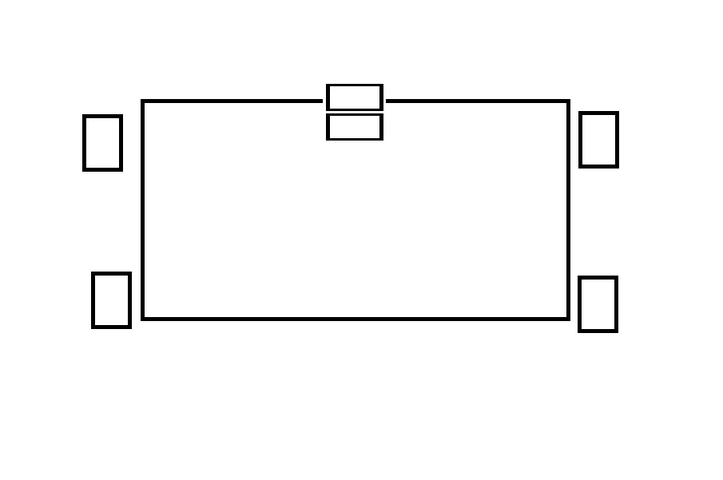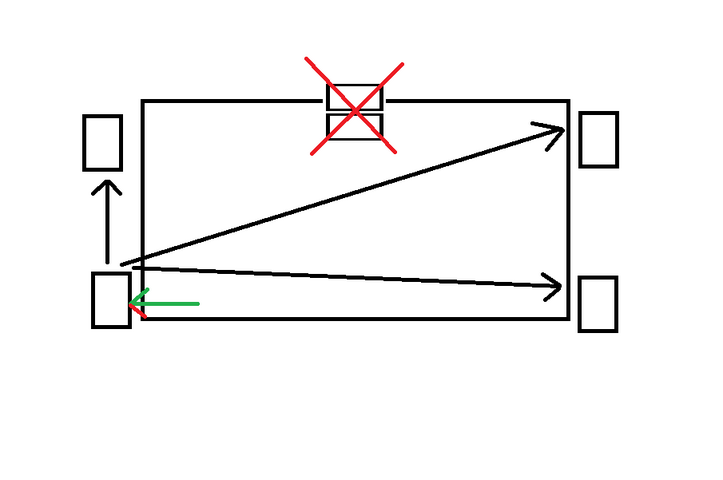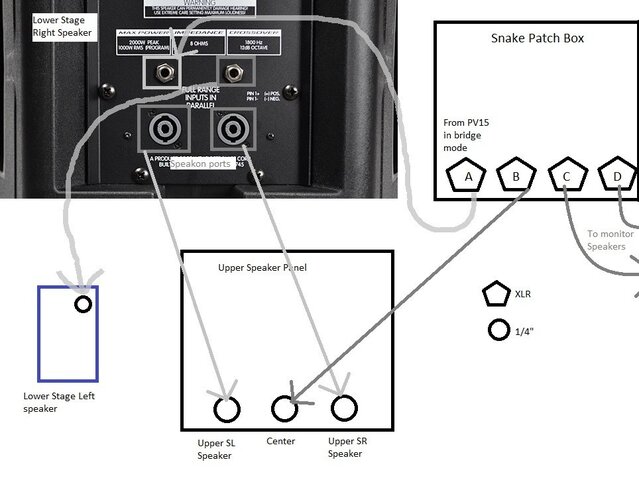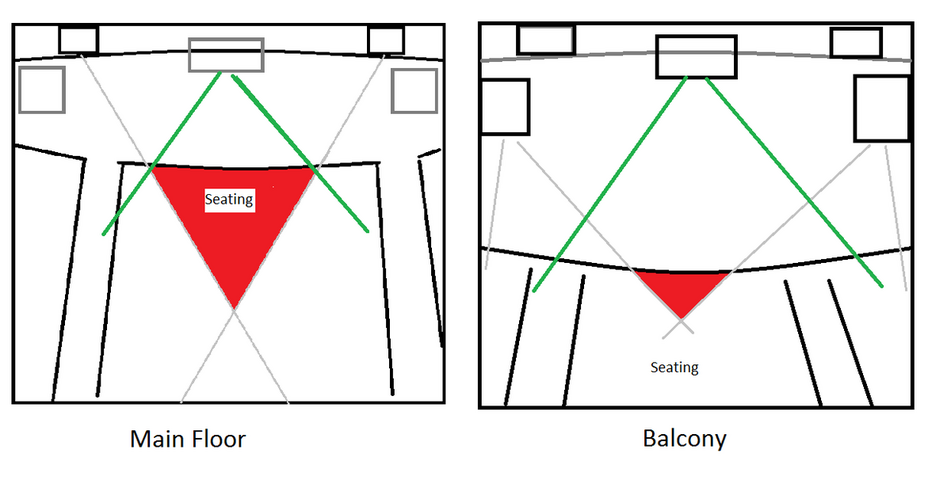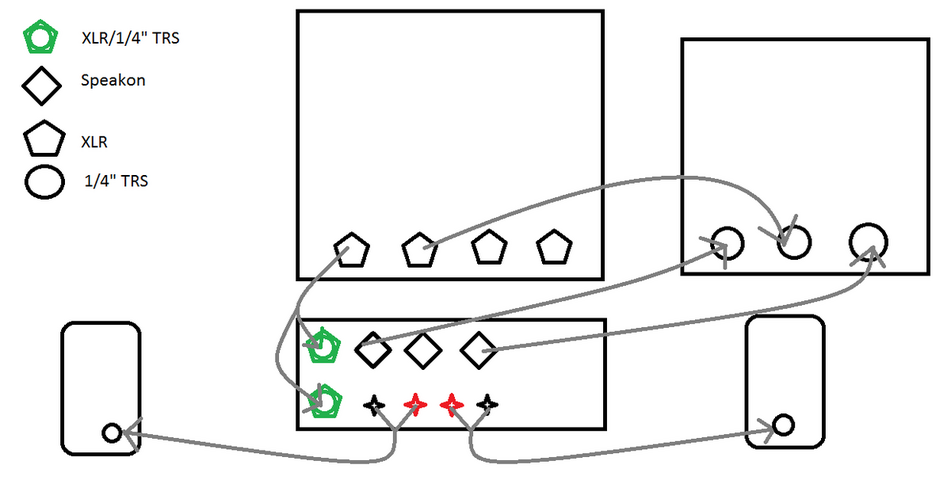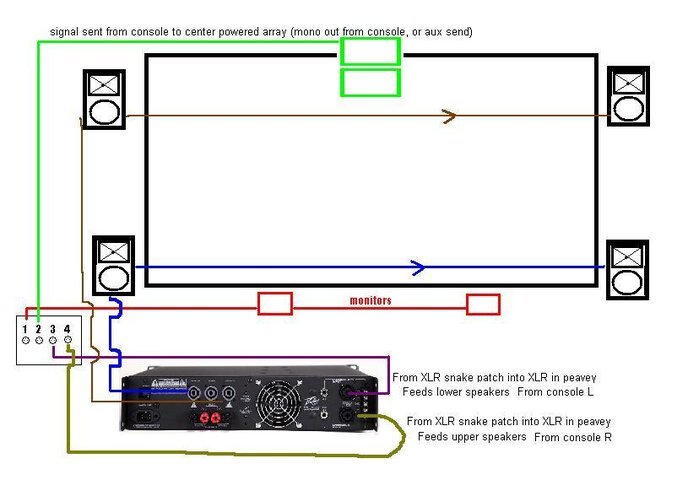cnnrward
Member
So I go to High School and we have a speaker setup like this:
 NOTE: the center channel speaker array is powered so for this question it just uses one of the four sends in our snake. The other speakers are passive. their make is Peavey Impulse 1012 at 8 Ohms.
NOTE: the center channel speaker array is powered so for this question it just uses one of the four sends in our snake. The other speakers are passive. their make is Peavey Impulse 1012 at 8 Ohms.
The way they are currently circuited is like so:
 All of this comes from one amp, a Peavey 1500. We also have a Peavey CS 800, and a Peavey 300 series monitor amp.
All of this comes from one amp, a Peavey 1500. We also have a Peavey CS 800, and a Peavey 300 series monitor amp.
So to my question...
What is the optimal way for me to be able to have maximum power to those four speakers using at max 2 snake sends using the 1500 adn the 300? The other two are for Powered speakers and monitor speakers. I would like to be able to use the CS800 for multiple zones such as lobby announcements and actor calls.
The only way to circuit the upper speakers is with 1/4" cable. the lower speakers can be connected with speakon ports.
If pictures are helpful thay can be posted.
thanks in advance!

The way they are currently circuited is like so:

So to my question...
What is the optimal way for me to be able to have maximum power to those four speakers using at max 2 snake sends using the 1500 adn the 300? The other two are for Powered speakers and monitor speakers. I would like to be able to use the CS800 for multiple zones such as lobby announcements and actor calls.
The only way to circuit the upper speakers is with 1/4" cable. the lower speakers can be connected with speakon ports.
If pictures are helpful thay can be posted.
thanks in advance!
Attachments
Last edited:



